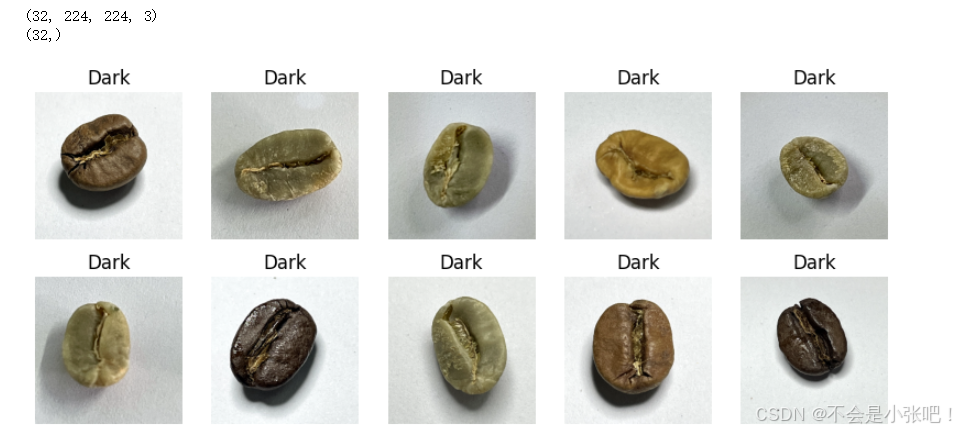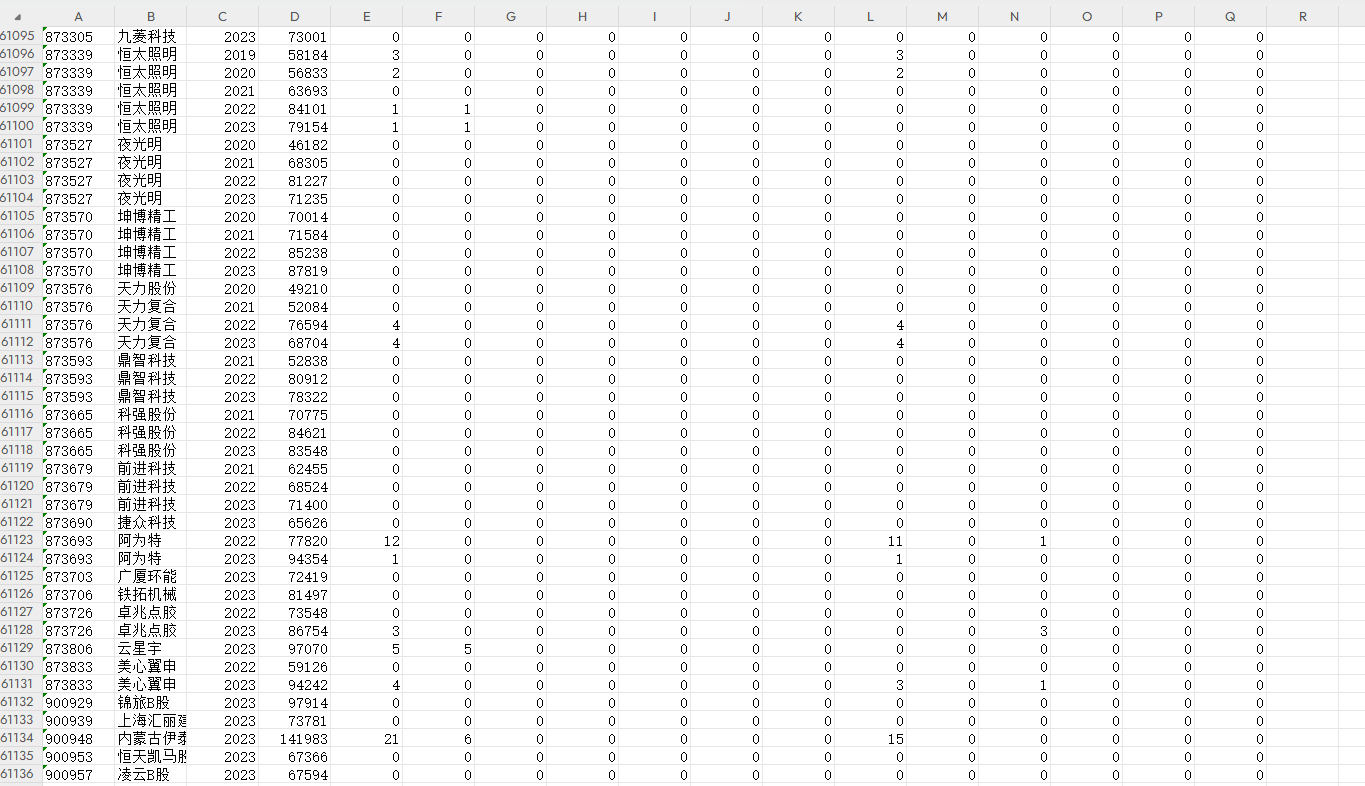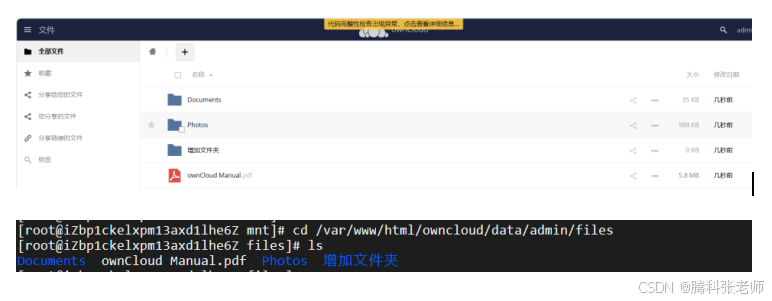- >- **🍨 本文为[🔗365天深度学习训练营](https://mp.weixin.qq.com/s/0dvHCaOoFnW8SCp3JpzKxg) 中的学习记录博客**
>- **🍖 原作者:[K同学啊](https://mtyjkh.blog.csdn.net/)**- 难度:夯实基础⭐⭐
- 语言:Python3、TensorFlow2
- 🏡 我的环境:
- 语言环境:Python3.8
- 编译器:jupyter lab
- 深度学习环境:TensorFlow2.4.1
一、前期工作
1. 设置GPU
如果使用的是CPU可以忽略这步
import tensorflow as tfgpus = tf.config.list_physical_devices("GPU")if gpus:tf.config.experimental.set_memory_growth(gpus[0], True) #设置GPU显存用量按需使用tf.config.set_visible_devices([gpus[0]],"GPU")2. 导入数据
from tensorflow import keras
from tensorflow.keras import layers,models
import numpy as np
import matplotlib.pyplot as plt
import os,PIL,pathlibdata_dir = "./49-data/"
data_dir = pathlib.Path(data_dir)image_count = len(list(data_dir.glob('*/*.png')))print("图片总数为:",image_count)1200
二、数据预处理
1. 加载数据
使用image_dataset_from_directory方法将磁盘中的数据加载到tf.data.Dataset中
from tensorflow import keras
from tensorflow.keras import layers, models
import os, PIL, pathlib
import matplotlib.pyplot as plt
import tensorflow as tf
import numpy as np
import tensorflow as tfbatch_size = 32
img_height = 224
img_width = 224
train_ds = tf.keras.preprocessing.image_dataset_from_directory(data_dir,validation_split=0.2,subset="training",seed = 123,image_size=(img_height, img_width),batch_size=batch_size
)
val_ds = tf.keras.preprocessing.image_dataset_from_directory(data_dir,validation_split=0.2,subset="validation",seed = 123,image_size=(img_height, img_width),batch_size=batch_size
)
class_names = train_ds.class_names
print(class_names) 
2. 可视化数据
plt.figure(figsize=(10,4))
for images, labels in train_ds.take(1):for i in range(10):ax = plt.subplot(2, 5, i+1)plt.imshow(images[i].numpy().astype('uint8'))plt.title(class_names[np.argmax(labels[i])])plt.axis('off')
for image_batch, labels_batch in train_ds:print(image_batch.shape) print(labels_batch.shape)break
3. 配置数据集
AUTOTUNE = tf.data.AUTOTUNEtrain_ds = train_ds.cache().shuffle(1000).prefetch(buffer_size = AUTOTUNE)
val_ds = val_ds.cache().prefetch(buffer_size=AUTOTUNE)
normalization_layer = layers.experimental.preprocessing.Rescaling(1./255)train_ds = train_ds.map(lambda x, y: (normalization_layer(x), y))
val_ds = val_ds.map(lambda x, y: (normalization_layer(x), y))
image_batch, labels_batch = next(iter(val_ds))
first_image = image_batch[0]
print(np.min(first_image), np.max(first_image))0.0 1.0
三、构建VGG-16网络
在官方模型与自建模型之间进行二选一就可以了,选着一个注释掉另外一个。
VGG优缺点分析:
- VGG优点
VGG的结构非常简洁,整个网络都使用了同样大小的卷积核尺寸(3x3)和最大池化尺寸(2x2)。
- VGG缺点
1)训练时间过长,调参难度大。2)需要的存储容量大,不利于部署。例如存储VGG-16权重值文件的大小为500多MB,不利于安装到嵌入式系统中。
自建模型
from tensorflow.keras import layers, models, Input
from tensorflow.keras.models import Model
from tensorflow.keras.layers import Conv2D, MaxPooling2D, Dense, Flatten, Dropoutdef VGG16(nb_classes, input_shape):input_tensor = Input(shape=input_shape)# 1st blockx = Conv2D(64, (3,3), activation='relu', padding='same',name='block1_conv1')(input_tensor)x = Conv2D(64, (3,3), activation='relu', padding='same',name='block1_conv2')(x)x = MaxPooling2D((2,2), strides=(2,2), name = 'block1_pool')(x)# 2nd blockx = Conv2D(128, (3,3), activation='relu', padding='same',name='block2_conv1')(x)x = Conv2D(128, (3,3), activation='relu', padding='same',name='block2_conv2')(x)x = MaxPooling2D((2,2), strides=(2,2), name = 'block2_pool')(x)# 3rd blockx = Conv2D(256, (3,3), activation='relu', padding='same',name='block3_conv1')(x)x = Conv2D(256, (3,3), activation='relu', padding='same',name='block3_conv2')(x)x = Conv2D(256, (3,3), activation='relu', padding='same',name='block3_conv3')(x)x = MaxPooling2D((2,2), strides=(2,2), name = 'block3_pool')(x)# 4th blockx = Conv2D(512, (3,3), activation='relu', padding='same',name='block4_conv1')(x)x = Conv2D(512, (3,3), activation='relu', padding='same',name='block4_conv2')(x)x = Conv2D(512, (3,3), activation='relu', padding='same',name='block4_conv3')(x)x = MaxPooling2D((2,2), strides=(2,2), name = 'block4_pool')(x)# 5th blockx = Conv2D(512, (3,3), activation='relu', padding='same',name='block5_conv1')(x)x = Conv2D(512, (3,3), activation='relu', padding='same',name='block5_conv2')(x)x = Conv2D(512, (3,3), activation='relu', padding='same',name='block5_conv3')(x)x = MaxPooling2D((2,2), strides=(2,2), name = 'block5_pool')(x)# full connectionx = Flatten()(x)x = Dense(4096, activation='relu', name='fc1')(x)x = Dense(4096, activation='relu', name='fc2')(x)output_tensor = Dense(nb_classes, activation='softmax', name='predictions')(x)model = Model(input_tensor, output_tensor)return modelmodel=VGG16(len(class_names), (img_width, img_height, 3))
model.summary()四、编译
在准备对模型进行训练之前,还需要再对其进行一些设置。以下内容是在模型的编译步骤中添加的:
●损失函数(loss):用于衡量模型在训练期间的准确率。
●优化器(optimizer):决定模型如何根据其看到的数据和自身的损失函数进行更新。
●指标(metrics):用于监控训练和测试步骤。以下示例使用了准确率,即被正确分类的图像的比率。
# 设置初始学习率
initial_learning_rate = 1e-4lr_schedule = tf.keras.optimizers.schedules.ExponentialDecay(initial_learning_rate, decay_steps=30, decay_rate=0.92, staircase=True)# 设置优化器
opt = tf.keras.optimizers.Adam(learning_rate=initial_learning_rate)model.compile(optimizer=opt,loss=tf.keras.losses.SparseCategoricalCrossentropy(from_logits=True),metrics=['accuracy'])五、训练模型
🔊注:从本周开始,网络越来越复杂,对算力要求也更高,CPU训练模型时间会很长,建议尽可能的使用GPU来跑。
epochs = 20history = model.fit(train_ds,validation_data=val_ds,epochs=epochs
)六、可视化结果
acc = history.history['accuracy']
val_acc = history.history['val_accuracy']loss = history.history['loss']
val_loss = history.history['val_loss']epochs_range = range(epochs)plt.figure(figsize=(12, 4))
plt.subplot(1, 2, 1)
plt.plot(epochs_range, acc, label='Training Accuracy')
plt.plot(epochs_range, val_acc, label='Validation Accuracy')
plt.legend(loc='lower right')
plt.title('Training and Validation Accuracy')plt.subplot(1, 2, 2)
plt.plot(epochs_range, loss, label='Training Loss')
plt.plot(epochs_range, val_loss, label='Validation Loss')
plt.legend(loc='upper right')
plt.title('Training and Validation Loss')
plt.show()七、总结
VGG-16也存在一些局限性,如参数量较大导致训练和推理时间较长,且需要大量资源;对小尺寸图像和资源有限的环境可能不理想等。在实际应用中,需要根据具体任务和资源条件进行权衡和选择。




















